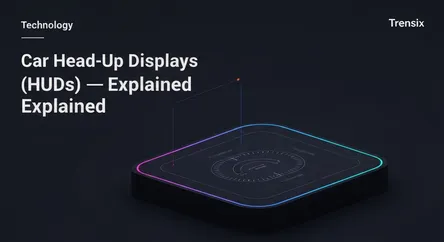Technology
Car Head-Up Displays (HUDs) Explained

Discover Head-Up Display (HUD) technology, which projects vital driving data onto your windshield, enhancing safety by keeping your eyes on the road.
What is it?
A Head-Up Display, or HUD, is a transparent display that presents crucial driving information directly within the driver's line of sight. Originally developed for military aviation, this technology projects data like speed, navigation directions, and vehicle warnings onto the car's windshield or a dedicated combiner screen. This allows the driver to view vital information without taking their eyes off the road. Information is displayed as a virtual image that appears to float ahead of the vehicle, integrating seamlessly with the driver's view.
Why is it trending?
HUDs are trending as they transition from a luxury add-on to a mainstream safety and convenience feature. The increasing integration of Advanced Driver-Assistance Systems (ADAS) is a major catalyst, as HUDs can display alerts for lane departure or collision warnings more effectively. Furthermore, consumer demand for a more connected and futuristic driving experience, coupled with a decrease in the cost of display technology, has encouraged more automakers to include HUDs in a wider range of models, including more affordable vehicles.
How does it affect people?
For drivers, the primary benefit of a HUD is enhanced safety. By keeping critical information in their direct line of sight, it significantly reduces the time their eyes are off the road, minimizing distractions and potentially shortening reaction times. This can lead to a safer driving experience, especially in complex traffic situations. It also improves comfort and convenience, as drivers no longer need to constantly refocus their eyes between the distant road and the nearby instrument panel, which can reduce eye strain on long journeys.